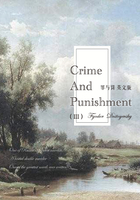from Holiday magazine, December 1965
Among the virtues and vices that make up the British character, we have one vice, at least, that Americans ought to view with sympathy. For they appear to be the only people who share it with us. I mean our worship of the antique. I do not refer to beauty or even historical association. I refer to age, to a quantity of years. Provided a public man is old enough, we forgive him any folly. Provided a building is old enough, we discount ugliness, discomfort, dirt, and employ a special government department to shore it up. All the religious revolutions of the last five hundred years have affected only the top half of our minds, and left us with a little of the medieval attitude towards relics deep in our British unconscious. This is the most harmless thing left there; but still, it conditions our aesthetic attitudes.
For what is a work of art? Is it the form or the substance? 'Both,' we feel, when we think about it at all, 'but if we must choose, give us the substance.'
There was much outcry when our National Gallery began to clean the dirt of centuries off the old masters. We had got used to being able to catch no more than a glimpse of the original, and to viewing great art, as it were, on a dark and foggy night. Perhaps we felt the Master had said, 'It looks rather gaudy now—but wait for five hundred years till it's really dirty and then you'll be able to enjoy it properly.'
Stone that has mouldered out of shape is left just so. We do not believe that a reconstruction, a filling of the old form with new material, would result in anything genuine. We prefer a lump of the original stone, against which we lean a notice saying: 'Such a work of art as this is irreplaceable. Please do not touch.' On the other hand, one of the most beautiful churches in my part of the country, for which we have to thank an eccentric nobleman of the nineteenth century, is an accurate reproduction of an eleventh-century church in the south of France. Yet no one goes to see it; as if we ought to be moved, not by repeated performances of a symphony, but only by the first, with the composer conducting.
A ludicrous belief, you will agree; and yet I must admit, against all sense and reason, that I share it. The truth is, we have a primitive belief that virtue, force, power—what the anthropologist might call mana—lie in the original stones and nowhere else. Yet we must know these stones; they must be part of daily life so that we may have adjusted some sensor to the correct wavelength for reception, as you might adjust your eyes to a dim light.
Our old churches are full of this power. I do not refer to their specifically religious function or influence. There is a whole range of other feelings that have, so to speak, coagulated around them. These feelings are worth analysing and the analysis might help us to understand ourselves. I think particularly of the two English cathedrals I know well—Winchester and Salisbury. I can hold models of them each in my head, weighing them against each other. Let me give Winchester every advantage I can think of.
Winchester has had three cathedrals on the same site; and probably a pagan temple before that, since there is a sacred and pre-Christian well in the crypt. Even the present building, begun in the eleventh century, is the accretion of at least four hundred years of construction and four styles of architecture. The city was once England's capital; so the cathedral is stocked with the graves of kings, queens, cardinals and archbishops—a most distinguished crowd who contribute historical perspective. In a desire—which we British understand if no one else does—to share a roof with these top people, hundreds of commoners and minor nobilities have crowded in and got themselves buried in the less fashionable parts of the building. Here, the very stones speak to you in English or Latin or Greek. What they have to say varies from the pathetic to the mildly funny. What precisely is implied by the inscription to Davis Williams D.C.L.? All we are told of him is that
IN THIS CATHEDRAL
HIS POWERFUL AND MELODIOUS VOICE
WAS SINGULARLY IMPRESSIVE.
But I must confess that my favourite is a Royal Navy inscription, stiff-upperlipped, a masterpiece of understatement to
WILLIAM CARMICHAEL FORREST
1ST LIEUTENANT H.M.S. DOTEREL
WHO LOST HIS LIFE BY THE ACCIDENTAL
EXPLOSION OF THE SHIP'S MAGAZINE
AND CONSEQUENT FOUNDERING
OF THE SHIP.
To saunter and read these is a quiet pleasure. One does not need much scholarship to feel the pathos in the memorial of those children
IN ORIENTALI INDIA HEU! LONGE
A PARENTIBUS SEPULTARUM.
You may find your lips twitching at the quotation thought apt for Jane Austen, our demure satirist of English life:
'SHE OPENETH HER MOUTH WITH WISDOM;
AND IN HER TONGUE IS THE LAW OF KINDNESS.'
Doctor Johnson gave it as his opinion that in a lapidary inscription, no man is on oath, but one feels that Miss Austen might have been better accommodated with some other quotation from the Scriptures.
For a Winchester man, might mana reside in the statuary? Winchester is crowded with statues. Like the inscriptions, some of them are funny. Those marble parliamentarians, those gesticulating statesmen of the eighteenth century seem to have nothing to do with religion or death. Are they perhaps persons who stepped inside to shelter from sudden rain and had so gross an ignorance of the nature of the place that they harangued the high altar; and were struck so, justly, as an example to those who come after? Sometimes the dust of commoners has taken a revenge and lies on those aristocratic noses to make clowns or masks of them, so that a whole splendid monument seems to hold up nothing but the face of zany. Time has taken an even neater revenge on my favourite Winchester statue. He is a seventeenth-century nobleman, just about to set out on a stroll or enter some drawing room. You can see every hair of his wig, every thread of his lace, see even the pattern woven into his silk coat—see, still, the narcissistic smugness written in every line of his complacent face. Below him is the inscription which was to proclaim his lineage and his virtues. But here is the joke: you cannot read a word of it. Some statues carry modern, explanatory notices; but no one has cared to tamper with the anonymity of this alabaster gentleman. There is a gleeful conspiracy to keep him in the state to which the decay of monuments has called him.
Of course, not all Winchester statues are laughable. At the east end is a tiny bronze statue of William Walker, raised by public subscription. He was a diver; and at the beginning of this century when the building was in danger of collapsing into its own soggy foundations, he worked daily for six years, in slime and stinking darkness, until he had underpinned the walls and made the cathedral safe. Winchester thinks highly of him.
Then there is a figure in its own chantry—a small room or chapel where it was intended that mass should be said in perpetuity for the owner's soul. The whole thing looks like a gigantic four-poster; and the figure lies there in bed, apparently asleep. No expense has been spared. The figure is not only carved but enamelled and deceives the eye, as do the waxworks of Madame Tussaud. Even the cardinal's red hat is exact, though stone. To the thoughtful eye, this is not a Christian tomb at all. It resembles an Egyptian one, with a figure provided as an eternal home for the ka, the life spirit. Indeed, the apparent security of the figure is no more than a desperate attempt to cheat death, a last throw made by a man who had some considerable acquaintance with sin. This is the tomb of Henry Beaufort, a political churchman, chancellor of England, and so on, whose deathbed in 1447 was one of the most terrible recorded. He tried, in his delirium, to bribe death to pass him by. Shakespeare makes articulate what lies behind the calm figure and the cardinal's hat:
If thou be'st death, I'll give thee England's treasure,
Enough to purchase such another island,
If thou wilt let me live—
It is an eerie tomb; and not all its huddling as near as possible to the shrine of Saint Swithin can keep me comfortable if I stand in that part of the cathedral. If this is mana—and I do not think it is—I can do without it. Not the tomb of William Rufus, placed with kingly indifference to the convenience of others, on the centre line of the building so that processions have to divide around it; not those blue-and-gilt coffers with their loads of ecclesiastical and royal bones placed on the surround of the sanctuary; indeed not even Winchester City with its Round Table, its ancient school and holy well can give me what I get from more familiar stones in Salisbury.
I am not the only one who feels so. A few days ago I walked in Winchester Cathedral behind two people from Salisbury. The cathedrals are only twenty-five miles apart and Winchester is the richer. But these ladies from Salisbury did not find it so. Somewhere on the downland road that links the two cities, they had passed an invisible barrier and found themselves outside their own diocese. Winchester, they felt—Winchester, once England's capital—was provincial. What were cardinals and Kings to put against Poore, Longespee, Herbert and Hooker? The stones of Winchester were the wrong shape and the wrong sort. I had begun to eavesdrop in a spirit of kindly amusement, but I found myself to my astonishment agreeing with them. I had come, as I often do, to admire Winchester and be affectionate to it; and it took these ladies to bring me to my senses. I knew I had always felt as they did but had never had the self-awareness to admit it. Winchester is made of the wrong stone. It is the wrong shape. It stands on a slope, and it has no spire.
Driving home across the downs, I was now prepared for the invisible barrier, and heard a distinct 'Ping!' as I passed through it. The barrier was the exact point where Salisbury and Winchester influences were balanced. Like a space probe passing from moon's gravity to earth's gravity I was now hurrying faster and faster towards my own experiences of mana. I do not live in the close; but I was going home, and I was going home to the cathedral.
Fifteen miles away you can feel the cathedral begin to pull. It seems ageless as the landscape. You sense that the rivers run towards it, the valleys opening out, each to frame the spike of the spire. As for the roads, where else should they lead? Even today, though motor traffic is imposing a new pattern on the old one, you can see how the tracks make deeply for the spire and draw together at the ancient bridge just outside the close. It has been a long, steady work, this influencing of the landscape, this engraving and rubbing out, this adjusting and twitching of a whole country into place. And mana, however subtle, however indefinable, has at least one quality that aligns it with other forces: it varies inversely as the square of the distance. Fifteen miles away it begins to pull; but stand close to the walls and you feel you might click against them like a nail to a magnet.
A critic may bring up the sane, sad theory that you feel this way because the cathedral has become part of your life, and that mana is no more than familiarity. Of course there is something in this. Your mind becomes stocked with memories enough to fill the huge building itself. There are vistas you remember as a graded series of pictures, because you first walked there when you clung to your mother's hand. A particular Salisbury monument comes to my mind in three sizes; one when I looked up to it, one when I saw it at eye level, and one, alas, when I stand and look down. There have been the great occasions, celebrations of victory, when orchestras have played and massed choirs sung. There are grotesque memories too—one of a flooded cathedral with a punt moving solemnly up the nave. There are memories of inexpressible beauty: a floodlit cathedral, a magic cathedral under the full moon; a bone white spire against the smoke from burning Dunkirk, with the lightning conductors glittering like emeralds; a rose-coloured cathedral, yet washed from below with the reflected whiteness of a million open daisies. There are memories of the cathedral when it seemed no more impressive than a barn. It is a splendid instrument for meteorology to play on, and never looks the same two days running. Yet meteorology is not mana.
Does it lie in our statues? We have not so many as Winchester since we have never been so central to affairs. What statues we have are mostly imperfect. The left wing of religion is always knocking our cathedrals about and the right wing makes them over-elaborate. The left wing, the iconoclasts of the seventeenth century, have left their trade-mark in the painted glass—or rather in the absence of it. What enraged them was a face; and sometimes you can see a saint in a window with plain glass where his face used to be. This must have been tremendous fun of course—think of breaking things and being virtuous into the bargain! You can see their like any day of the week in a newsreel, turning over cars and breaking shop windows. One inconoclast was so famous he even got the nickname 'Blue Dicky' for his skill in smashing painted glass with a pike, going from window to window, and as the chronicler says, 'rattling down their glassy bones'.
But there has been another specialist at work in Salisbury. He is nameless and timeless, but you can identify him by his individual psychosis. He cannot see a stone projection without wanting to break it off. Why, in Athens, in the year 415 BC, he was up all night, bashing away at—but that is another story and too indelicate for an essay on cathedrals. In a church he has to be content with noses. It is no good when you walk round Salisbury cathedral and look at our maimed figures to think of a slow decay. Stone noses don't fall off, particularly when an effigy lies on its back and its nose points at the vaulting. Each of these breakages represents an episode, a moment of time. It was darkish, I believe, and the cathedral as nearly deserted as may be, when the little man stole out of the shadows with his hammer. Bash! Clitter clatter! and he is away over the downs, fingering the stung place on his cheek where a minute fragment of Bishop Poore hit him, but giggling and jerking with a possibly sexual excitement which dies down gradually so that he broods on the great days in Italy and Greece, and that wonderful young time he had in Egypt, when statues were statues and you had to use a sledgehammer. He left our cathedral with hardly a nose in the place.
Yet he did not injure the building as much as indifference has injured it. In the eighteenth century the fabric was wholly neglected. Anyone who took his religion seriously was dismissed as an 'enthusiast', as damning a label as 'communist' is today. Significantly enough, the cross on the top of our spire was replaced by a useful weather-cock in that century; a mechanism, perhaps, by which the venal and indifferent canons regulated their affairs. If you read the statutes of the cathedral you will find that, during the eighteenth century, not one addition was made. Round about 1760, however, the canons got people to build houses in the close, and gave them a 199-year lease for nothing but the condition that when the lease expired the houses should become cathedral property. Today, these leases are running out and the exquisite houses reverting to the chapter. It was a superbly long-sighted stroke of business that makes Wall Street look like a kindergarten. But these same canons so neglected the cathedral structure that during a storm of about the same date as the leases, the great west window bellied like a sail in the wind, then burst.
Even so, it is arguable that restoration has done more harm to Salisbury Cathedral than indifference. In the late eighteenth century there came a man called James Wyatt. He swept away monuments or altered their position. We had chantries—Beauchamp and Hungerford—clapped like earmuffs on each side of the Lady Chapel. He took them away and re-erected them, one in a public park where children have kicked it to bits, the other in the grounds of a laundry. He pushed the old choir screen into a side chapel. He tore down and threw away the acres of painted glass that the iconoclasts had not reached, and filled the windows with clear glass that lets the daylight in; as if inviting anyone who should pray in the cathedral to do so with eyes open, lest he should be led astray by some sense of awe and mystery, and the feeling that a church is a different sort of place from anywhere else. Wyatt opened vistas in the vast interior as though the building were a gentleman's estate. He was part of the Gothic revival, which was neither Gothic nor a revival but a misunderstanding of a church's function and a misreading of history. The only good thing he did was to reveal the bones of the building itself. Salisbury Cathedral is unique in England because it was built all in one style, like Blenheim or the Crystal Palace.
Round about the year 1200, Bishop Poore was standing on a hill overlooking the confluence of the local rivers, according to legend, when the mother of Jesus appeared to him, told him to shoot an arrow and build her a church where the arrow fell. The arrow flew more than a mile and fell in the middle of a swamp. There, with complete indifference to such things as health, foundations, access and general practicability, the cathedral was built. Eighty years later, with a technological gamble which makes space travel seem child's play, the builders erected the highest spire in the country on top of it, thousands of tons of lead and iron and wood and stone. Yet the whole building still stands. It leans. It totters. It bends. But it still stands; and Wyatt stripped the building to the point where we can see the members of that ancient engineering as clearly as they may be seen in a bridge; so that a model of the cathedral, however small, is a pretty, even an exquisite thing. I have heard rumour that there is in fact a weight-bearing stratum in the swamp; but if there is, and the thing does not float by some miracle, the builders could not have known about it. So it stands, a perpetual delight, a perpetual wonder, with the whole of our little body politic shrugged into shape about it.
Perhaps the wonder is not so visible inside. There, you may be more conscious of the bending pillars, of Wyatt's daylight emptiness in which the soaring stone is too naked, too austere. Yet a Gothic cathedral is never quite without the quirkish and personal. The noseless bishops and knights on their tomb slabs preserve a timeless dignity; but a hundred feet above them squint the faces in which the medieval stonecutter recorded his opinion of the boss. It was never a flattering opinion, but always full of life, always contemporary, with the mordant immediacy of a political cartoon. Tourists seldom examine these faces because they have not the time; and some of these cartoons are nearly inaccessible. But if you have the hardihood to use your binoculars, it is astonishing how the faces leap down. You are looking straight at the life of seven hundred years ago, the life of the tavern and street, the sweaty, brawling, cruelly good-humoured life that later congregated on the Left Bank or in Greenwich Village; and still later was to be debauched finally by television and mass sales into respectability. You can look straight at the work of artists who would never be knighted or win an international prize. In these carvings is the integrity of an art that did not know temptation.
The tourists walk through. Conducted parties group to listen. Sightseers wander. At moments when there is no other noise, you hear always the showering sound of heels on stone. This slow drift goes on all day. If one of the daily services is in progress, part of the building is cut off symbolically by ropes of red silk stretched between pillars. Far off, inside the rope, the choir sings, or you hear the echoing versicles said, not sung, to a congregation of three or four in a dim side chapel. When the major services are held, such visitors as do not wish to take part but are only there to see what the inside of a cathedral looks like, stand grouped under the west windows, with wary vergers to see they don't turn their backs on the high altar. At these times you may see such richness and ritual as the church has retained or renewed from medieval times: gold crosses, candles, a robed choir, priests in glittering copes, bishops and deans in mitres. There will be processions: but in general they will reach the altar by the shortest route. For though the ambulatory is still there, its stones worn by the feet of ancient pomp, the church has rid itself of all that; and there is a perpetual wing of the church that regards even the lighting of one candle as a step toward the fires of Smithfield. When your meditation has got as far as that, you may turn back to the thought of Bishop Poore and his shining faith, with relief. Yes. Let Winchester keep its mixed architecture, its King Alfred, King William Rufus and Saint Swithin. Even though we have only Saint Osmund, a junior saint of whom next to nothing is known, and whose canonization was so much in debate it took centuries of diplomacy at Rome to get him recognized, nevertheless our building is a miracle of faith.
Yet this may have nothing to do with mana. A few years ago, when shapeless stones from Salisbury spire were piled on the cloisters, their replacements already in position four hundred feet overhead, you could have seen me stand and regard them with a strange and slightly sheepish, even furtive respect. They were just stone, you might say, that was all. They were not art, they were not architecture. They were a formless substance but I could not take my eyes off them. Did I not say we British prefer the substance if we must choose? The historian of religion might mutter about the stones that they were 'relics by contact'. But contact with what? It was mana, indescribable, unaccountable, indefinable, impossible mana. I think somewhat wryly how I stood the other day in the nave of Salisbury Cathedral, near a local cleric. He watched, with a kind of benevolent suspicion, as I held my hand close to a pillar, then moved it forward and back, like a man trying to find out if he has switched on the bars of an electric fire; but suspicion seemed to be winning over benevolence—so I went away.















